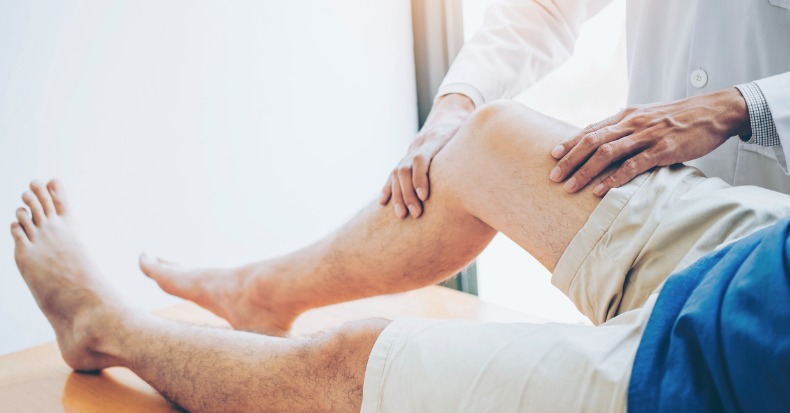The shoulder is one of the most mobile joints of the body, which allows us to engage in overhead movements that make life easier. However, this comes at a cost. In order for the shoulder to have such a wide range of motion (ROM), it has less stability than most other joints. In fact, shoulder […]
Chiropractic Care AFTER Knee Replacement
Total knee arthroplasty (TKA) is the most performed operating room procedure in the United States, and the number of surgeries is projected to increase by 400% (to 3.5 million a year) in the next twenty years due to prolonged longevity, the rise in obesity, and increasing rates of osteoarthritis. The surgery itself traumatizes the surrounding […]
Two Hip & Core Muscle Exercises for Hip and Low Back Pain
When it comes to the human body, an issue in one area can contribute to problems elsewhere. For example, one study found that three-in-five patients with femoroacetabular (hip) impingement also suffer from clinically significant low back pain, and increased disability in one location is associated with greater disability in the other. When it comes to […]
Managing the Arthritic Shoulder
While the shoulder is comprised of four joints, it’s the ball and socket glenohumeral joint that may play the most important role when it comes to the wide range of motion of the upper arm. However, this mobility comes at the cost of stability, which makes the shoulder a common source of injury. Sometimes these […]
Pre-Surgical Actions to Improve Knee Replacement Outcomes
Osteoarthritis (OA) is a very common chronic disease that frequently affects the knees of the elderly. The condition usually has a slow onset that results in pain, limited mobility, and stiffness due to swelling of the joint capsule, loss of joint space, and for some, joint deformity. Treatment guidelines generally recommend non-surgical options—like chiropractic care—as […]
Greater Trochanteric Pain Syndrome
The bone you feel when you put your hand on your hip is called the greater trochanter, and it serves as an important attachment point for several muscles that move the hip in multiple directions. Greater trochanteric pain syndrome (GTPS) is a general term that has been used to describe multiple disorders that cause lateral […]
HIIT for Improving Shoulder Function
To restore function following a shoulder injury or surgery, it’s important for the patient to perform rehabilitative exercises. While there are many classic exercises that are considered “standard” in rehab post-injury/surgery shoulder conditions, new research suggests that high-intensity interval training (HIIT) may be more effective. High-intensity interval training is an exercise concept that is characterized […]
Why Women May Be More at Risk for Knee Pain
The anatomical and physiological differences between men and women are obvious in many ways. But one way that’s often overlooked is how these differences relate to knee-related injuries, of which women may be between two-to-eight times more at risk for than men. When it comes to the lower extremities, an issue in the foot, ankle, […]
Hip Pain and Runners
Running is a form of exercise that many people utilize to stay in shape, lose weight, and reduce stress, among other reasons. While many avid runners do their best to ignore hip pain while on the road, trail, track, or treadmill, there is a point when their pain forces them to seek care. Let’s discuss […]
5 Exercises to Fight Forward Head Posture
Even though poor posture can impair physical function and affect one’s health, it’s very common to see people with a slouched, forward head posture. Aside from advice to sit up straight, limit phone use, or hold devices at eye level, are there any exercises that can help reverse forward head posture? The answer: “YES!” Let’s […]
- « Previous Page
- 1
- …
- 3
- 4
- 5
- 6
- 7
- …
- 12
- Next Page »









